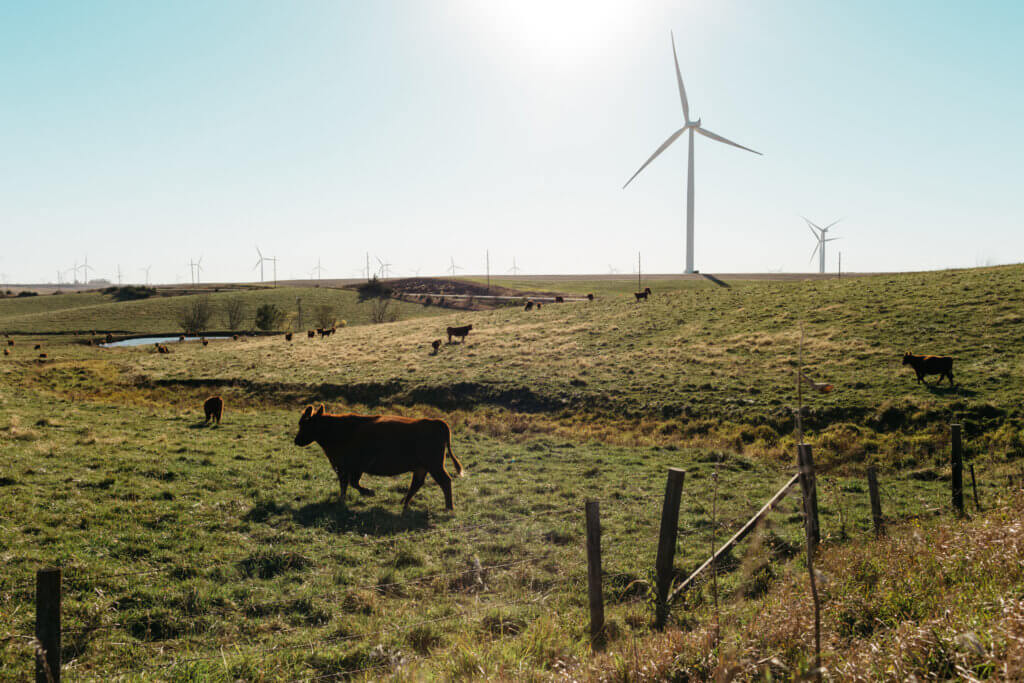Fact check: Wired story bypasses wind industry's efforts on bats
Recently, several news outlets, including Wired magazine's website, picked up a release from the Electric Power Research Institute (EPRI) concerning innovative approaches to reducing bat fatalities at wind farms. While the stories that resulted were not especially critical of wind power, they did not provide the context in which its impacts should be viewed.
All Americans can profit from our homegrown wind energy, not only in terms of economic value, but in the health and environmental benefits it provides. Wind energy is one of the safest forms of energy for both humans and animals. Unlike conventional fuel generation sources, wind energy does not pollute our air or drinking water, nor does it produce hazardous waste, and it consumes no water in the generation of electricity.
No form of energy is perfect; all human activity impacts the natural world. Given U.S. Fish and Wildlife Service data that shows that annual bird deaths from human-related causes include 97 million to 976 million birds which are killed by building collisions, 60 million or more by vehicles, and up to 2 million killed in oil and wastewater pits–it is clear that wind energy is a minor contributor to human-caused bird fatalities.
In addition, there is an important distinction to be made when it comes to assessing the impacts of various types of energy on wildlife. Which industries are transparent about their impacts? Which industries go above and beyond legal requirements to reduce those inevitable effects? Not only is the pollution-free energy the wind industry produces beneficial to wildlife, but we are also unmatched in our efforts to recognize, mitigate and publicly share the impacts we do have on the environment.
Our wildlife mortality data is one piece of data and must be considered in the context of wildlife loss caused by habitat destruction, global warming, mountaintop removal mining and other deadly forms of pollution such as mercury emissions. We know very little about the detrimental effects those and numerous other activities have. Meanwhile, the wind industry receives far more than its fair share of attention. Why? Because we openly discuss our impacts and seek collaborative efforts to reduce and avoid them.
We welcome the scrutiny because it challenges us to pursue better science and look for solutions; can other energy industries say the same?
Regarding bats, according to the National Wind Coordinating Collaborative (NWCC) Birds and Bats Fact Sheet, which was prepared with the active participation of the Fish and Wildlife Service, "Although several developments have reported relatively numerous bat fatalities, most studies have reported low rates of such bat fatalities." Even so, as partially noted in the articles on the EPRI initiative, the wind industry is actively engaged in groundbreaking research to reduce bat collisions at wind farms.
The Bats and Wind Energy Cooperative (BWEC) was formed in 2003 by Bat Conservation International, the U.S. Fish and Wildlife Service, the American Wind Energy Association, and the U.S. Energy Department's National Renewable Energy Laboratory. BWEC researches the issue of bat interactions at wind energy projects and is actively investigating several promising techniques that can be used to reduce them, such as acoustic deterrents and potential operational changes. Further, shortly after the emergence of White Nose Syndrome (WNS) as a significant threat to bat populations throughout the eastern states, and potentially North America, the wind industry proactively provided early leadership in funding WNS research to identify causes and possible treatments for the disease, as well as ways to prevent its further spreading to healthy bat populations.
The development of wind power and other renewable energy sources is important for the future of the country and health of the environment. Even so, the wind industry recognizes the need for identifying and minimizing its impacts on the natural and human environment. With this in mind, we will continue to work to lessen our already small impacts, but when you step back and look at the facts, it becomes clear that wind energy is the least impactful form of energy production available to our society today and the benefits it provides far outweigh the negligible impacts.
Related articles:
Opinion: Wind energy threat to eagles relatively low, June 26, 2012
Fact check: Bond bashes wind, mangles facts [UPDATED], June 19, 2012
American Wind Wildlife Institute releases white paper on eagles and wind power, May 25, 2012
Already following federal bird guidelines, wind co. says, March 29, 2012
Fact check: Bryce missteps on wind and birds, March 8, 2012
Colorado collaboration: Wind companies, conservation groups agree on wildlife best practices, February 6, 2012
The Fish & Wildlife Eagle Permit Rule: Our perspective, January 10, 2012
Wind power's impact on birds: modest, December 15, 2011
Bird fatalities at Laurel Mountain substation, November 9, 2011
Birds and wind: Bad news leads, good news in weeds, August 29, 2011
Fact check: Fox News off base on bird collisions, August 19, 2011
News story draws questionable conclusions from eagle collisions with old turbines, June 6, 2011
WINDPOWER report: Whooping cranes may avoid wind farms, more research ahead, May 25, 2011
Wind developer launches intensive avian monitoring program, May 23, 2011
AWEA files comments on "unworkable" U.S. Fish & Wildlife Service guidelines, May 19, 2011
U.S. Fish & Wildlife Service, AWEA, wind developers sign agreement to promote endangered species conservation, April 20, 2011
Wind industry backs research on bat concerns including White-Nose Syndrome, April 1, 2011
Wind turbine bird threat modest, January 18, 2011
Editorial: How serious is threat to birds?, January 5, 2011
Wind energy and birds: No double standard, September 9, 2009
Wind-wildlife group names first president, February 24, 2009



